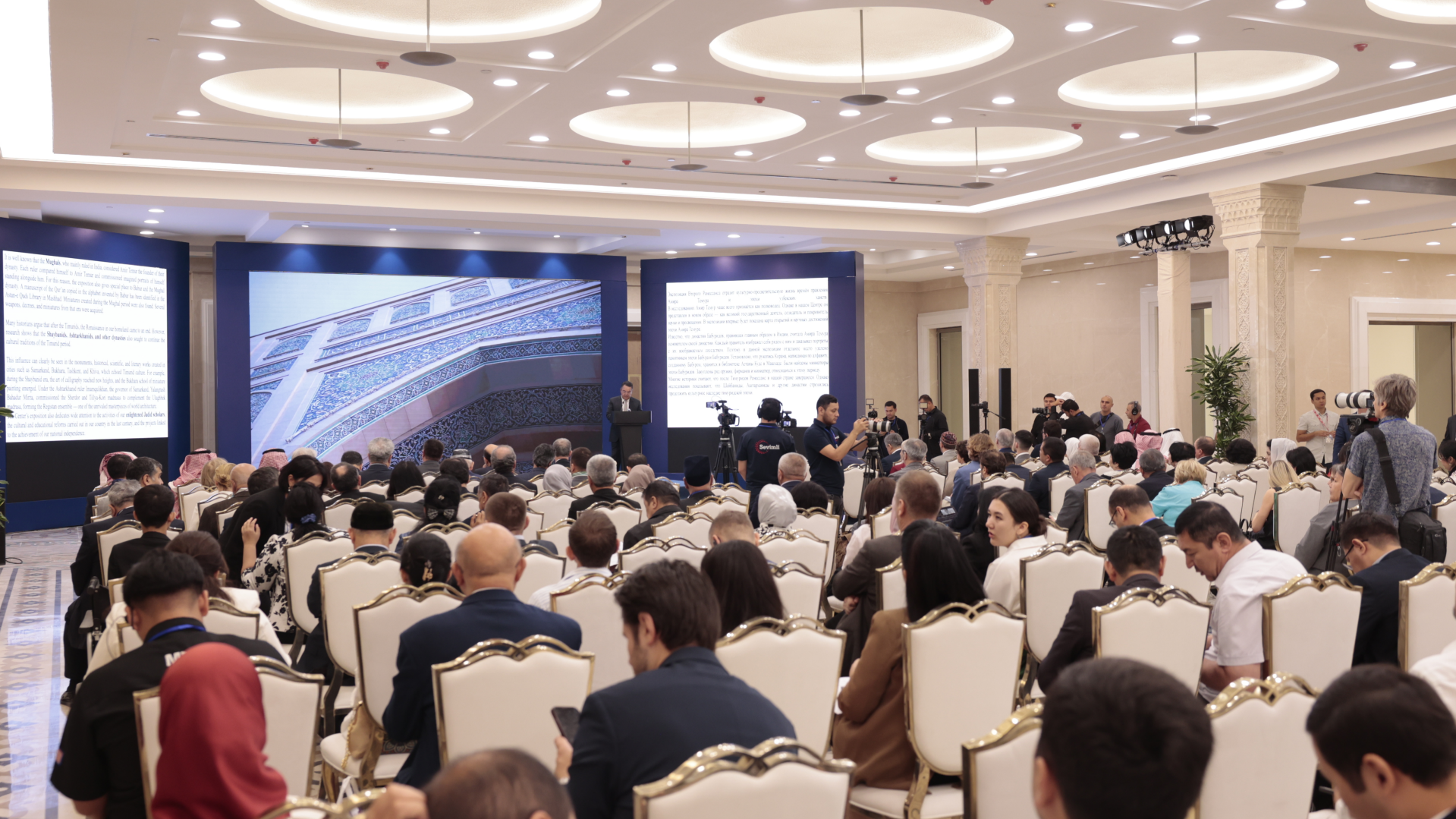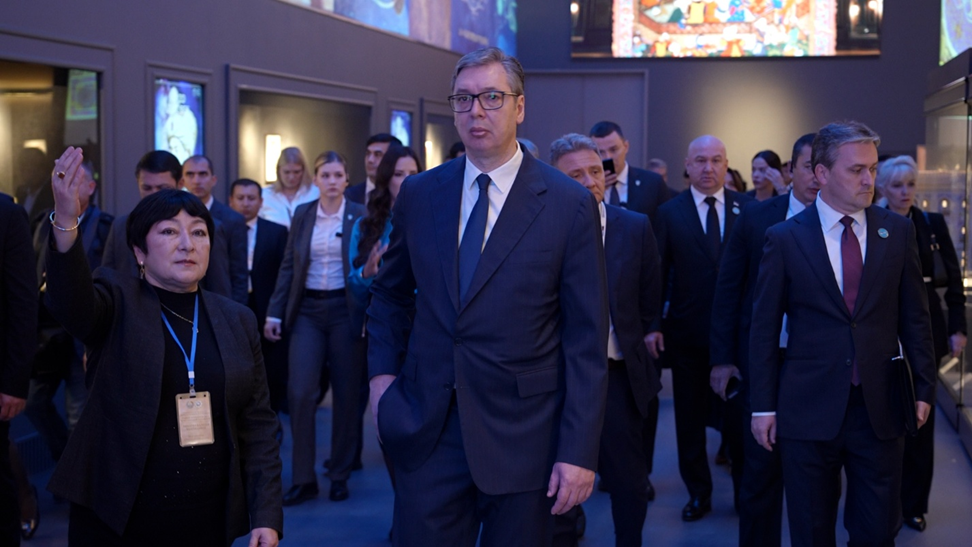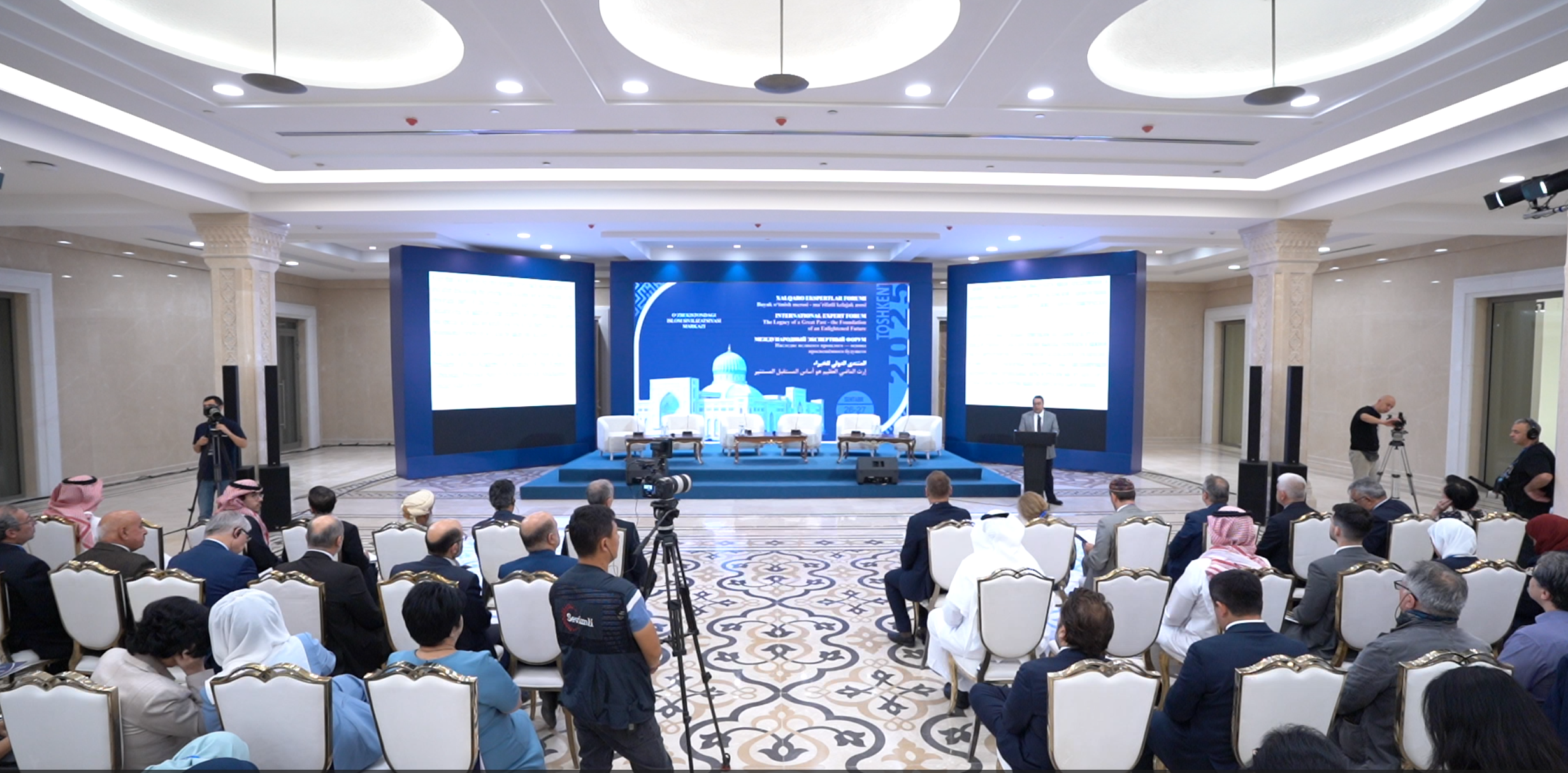The spiritual pillars of our statehood

In the “New Uzbekistan – The Foundation of the New Renaissance” section of the Islamic Civilization Center in Uzbekistan, a remarkable artistic-philosophical installation titled “Pillars of Statehood” is displayed. This conceptual ensemble symbolically reflects the historical evolution of statehood, governance culture, and political thought on the territory of Uzbekistan. Each pillar represents a distinct era from the earliest civilizations to the modern independent Republic revealing the continuous development of governance traditions and moral foundations.
1st Pillar
The first pillar embodies the earliest spiritual layers of the region the Zoroastrian era and the teachings of the Avesta. The stone carvings, an image of the Buddha statue, and an illuminated copy of the Avesta displayed inside the showcase evoke this ancient period.
Zoroastrianism promoted the idea that humanity attains perfection through good thoughts, good words, and good deeds. Therefore, this pillar is interpreted as the spiritual foundation of statehood, symbolizing light and purity. The famous maxim from the Avesta — “Good thought, good word, good deed” serves as the conceptual key for the entire composition.
2nd Pillar
The second pillar represents the formation of Turkic statehood. It unites the heritage of Sogdiana, Bactria, Khorezm, Chach, and Fergana, ancient civilizations that flourished on Uzbek soil. A replica of the Tonyuquq inscription is placed in the lower display case, illustrating the rise of written culture and political consciousness.
On the surface of the pillar is engraved a saying of Bilga Khagan:
“O my Turkic people, if you return to your essence, you shall rise again.”
This aphorism has become a symbol of national identity and unity. The design, inspired by ancient stone inscriptions, evokes the eternity of memory, language, and writing.
3rd Pillar
The third pillar reflects the integration of governance, knowledge, and culture the era of the Samanids, Qarakhanids, and Khwarazmshahs, when ideas of justice and wisdom flourished.
It bears a quotation from Yusuf Khass Hajib’s “Qutadghu Bilig”:
“He whom fortune raises high should choose righteous governance.”
This phrase expresses the notion that honesty and justice are the foundation of a stable state. Through the interactive interface embedded in the pillar, visitors can explore the administrative systems, social structures, and political values of early Turkic and Persian states.
4th Pillar
The fourth pillar highlights the Timurid era and the medieval period. It showcases the governance, diplomacy, and cultural achievements of the Khwarazmshahs, Qarakhanids, Timurids, Shaybanids, and Mughals.
At the top of the pillar is a special case dedicated to “The Code of Temur” (Temur Tuzuklari), while a touchscreen display below allows visitors to learn about Amir Temur’s principles of justice, state administration, and political system.
At the heart of this pillar stands Temur’s maxim:
“Power lies in justice.”
This concept encapsulates the essence of fair governance and the rule of law, symbolizing the historical foundation of Uzbek statehood.
5th Pillar
The final pillar represents modern Uzbekistan’s statehood. Its architecture draws inspiration from Tashkent landmarks the former “Panorama” building (1964) and the “Congress Hall” (2019). Transparent metallic latticework and gold-white panels symbolize openness, renewal, and democratic values.
Inside the pillar is the updated Constitution of the Republic of Uzbekistan, symbolizing the supremacy of law, a sovereign state, and governance rooted in the people’s will.
An inscription from the Constitution reads:
“Uzbekistan is a sovereign, democratic, legal, social, and secular state with a republican form of governance.”
This pillar serves as the supreme emblem of independence, representing the new stage of statehood founded on justice, human rights, and the will of the people.
The “Pillars of Statehood” complex embodies Uzbekistan’s historical progress as a continuous chain from ancient moral ideals to modern democratic principles. Through this composition, visitors can perceive at a glance the nation’s political consciousness, pursuit of justice, and spiritual elevation. Thus, the ensemble stands as a spiritual symbol of state stability.
“Each pillar reflects the architecture, culture, civilization, and discoveries of its era. Inside them are primary political, social, and cultural sources representing the five key stages of Uzbek statehood displayed through manuscripts, facsimiles, and models. This exhibition vividly demonstrates the unbroken historical legacy of Uzbek statehood, from ancient written sources to modern constitutional principles,” said Rustam Jabborov, Scientific Secretary of the Center.
Shahnоza Rahmonova
P.S.: The article may be republished with a citation linking to the official website of the Center.
Most read

Over 100 experts from more than 20 countries of the world are in Tashkent!

President of Serbia Aleksandar Vučić visited the Islamic Civilization Center in Uzbekistan

The Center for Islamic Civilization – a global platform leading towards enlightenment











